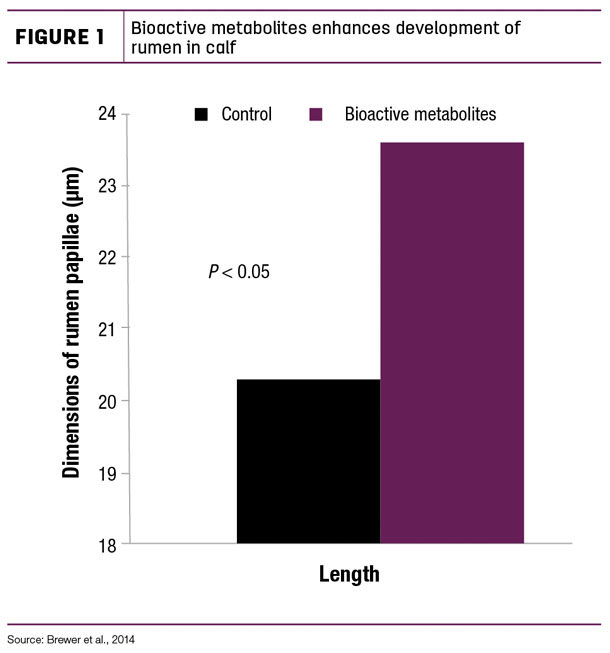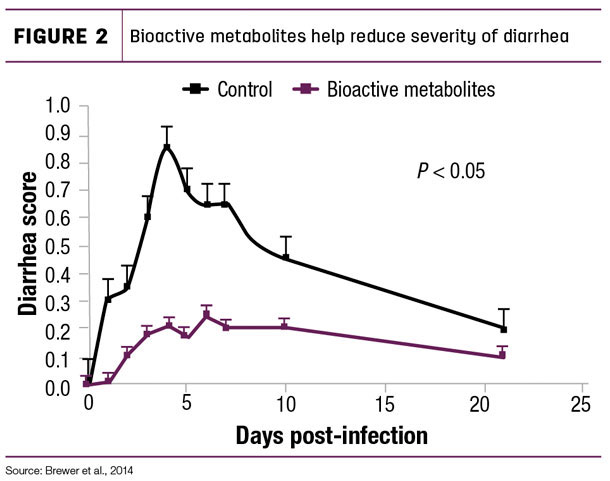Feed bioactive metabolites to support growth, immunity and better calf performance

Raising replacement animals is a key segment of many dairy operations. Not only does it represent a significant cost, but it also demands an important investment in time and dedication to raise highly performing heifers. Success in raising healthy and performing dairy cows depends on the capabilities of calves to grow healthy and achieve key performance goals. Even though many aspects of calf raising impact the animal capacity to achieve these goals, we know nutrition is a critical component for raising healthy animals.
Young calves are under significant pressure from the environment that surrounds them. Even a healthy calf that received the proper amount of high-quality colostrum doesn’t have a fully functional immune system. These animals entirely depend on their innate immune system, as their adaptive immune strength is under intensive development.
In addition, approximately 70% of all immune cells are present in the gastrointestinal tract, justifying the critical role of nutrition strategies. Replacement animals are at risk of many infections that might jeopardize their growth and development performance. Producers rely on many different practices to reduce, as much as possible, the risk of infection, such as various barn designs, ventilation strategies, high-quality nutrition or preventive protocols using antibiotics.
The latest, however, might be more challenging nowadays. With more and more restrictions in usage of antibiotics and growing consumer demand to reduce our industry usage of antibiotics, new methods need to be considered in prevention of potential diseases. Even if the dairy industry does not rely on a large amount of antibiotics compared to other sectors, using alternatives in prevention of potential disease will help transition towards a reduction of their usage.
In addition, these alternatives, such as bioactive metabolites, have been shown to significantly improve calf performance and help support immune strength.
Bioactive metabolites
Bioactive metabolites are natural compounds that can be naturally produced by the animal or present in its nutrition. Research has shown supplementing additional bioactive metabolites, through milk replacer or starter, can help support immune system performance, development and calf growth.
When present in calf nutrition, bioactive metabolites help support calf immune response, as the calf metabolism is not yet fully capable of producing them in a significant number. Bioactive metabolites are simply functional molecules having a beneficial effect on calf metabolism. This is a fancy way to regroup several molecules including antioxidants, polyphenols or organic acids.
It can also include some peptides, specific proteins and oligosaccharides that have also been shown to have a positive impact on calf immune response and development. These natural products are working in synergy with the calf’s biology to stimulate a balanced response that is proportional to the challenges the animal might be facing during its early life.
How does it work?
The calf must naturally coordinate the use of its energy to support its growth and development. However, when this coordination is not optimal, due to potential threat such as bacteria, the calf can use more energy to fuel its immune system to prevent damage from the bacteria. The immune system can consume a lot of energy when not optimized and, in the case of the calf, when not fully developed.
When this happens, the extra energy used to support the immune response is not profitable to meet the calf’s growth, development and high energy demands. Bioactive metabolites help stimulate normal functions of the calf biology by supplying functional molecules part of the calf’s normal responses.
For example, using specific peptides known to be involved as signaling molecules in an immune response mechanism will support the animal immune effectiveness. At 1 day old, the newborn calf’s immune system naturally produces oxygenfree radicals.
However, excess free radicals are not always beneficial to the animal and can cause oxidative damage to cells and tissues. Usually, the calf’s physiology clears excess free radicals on its own, but imbalance often occurs. Supplying more antioxidants will increase the calf’s capacity to cope with oxidative stress, leaving more energy for growth.
Rumen development is essential to calf performance. Some bioactive metabolites are known to help the establishment of beneficial bacteria in the rumen of the calf, leading to better rumen development. This is due to an improvement in volatile fatty acid (VFA) production, especially butyrate. VFA plays a key role in gastrointestinal development.
These nutritional strategies not only support immune development but also growth performance. A healthier calf that grows better also tends to have higher starter intake and better bodyweight gain, which leads to an improved feed efficiency. This ultimately leads to a heifer reaching its mature weight faster and consequently being more profitable.
Enhanced development of rumen papillae Bioactive metabolites have been shown through research to increase levels of beneficial bacteria and to reduce risk of pathogenic bacteria establishment. This helps to balance overall microflora of the animal’s gut, increasing immunoglobulin present in mucosal membrane, which is critical for its protection against pathogens.
By promoting a healthy gastrointestinal microflora establishment, the result is more total VFA production in the calf’s early digestive system, which supports rapid rumen and intestinal development.
Figure 1 (page 45) shows the impact on papilla length in calves fed bioactive metabolites or a control ration.

In this study, conducted in 2014, calves were challenged with Salmonella typhimurium prior to the trial. Calves fed bioactive metabolites showed a healthier epithelium development. This can be explained by longer papilla length, increased starter intake and higher VFA production in calves fed bioactive metabolites.
Reduced severity of diarrhea In the same study, calves that were again challenged with Salmonella typhimurium and fed bioactive metabolites in both milk replacer and calf starter were less likely to exhibit clinical signs of infection and diarrhea, as shown in Figure 2.

This positive outcome can be explained by reduced intestinal colonization of the pathogen and the healthier gastrointestinal tract of the calf. Conclusion Bioactive metabolites are an efficient way to support calf immune development and growth performance.
The use of bioactive metabolites has shown potential to improve gastrointestinal development, beneficial microflora establishment and reduction of pathogen infection.
They are now used in calf nutrition strategies to stimulate the development and immune strength of response of the calf and counteract certain health related challenges during growth.
The use of these natural products as nutritional additives in calf diet both pre-weaning and post weaning might represent a possible nutritional solution to reduce the need of antibiotics in modern animal production and better support the biology of developing calves.
